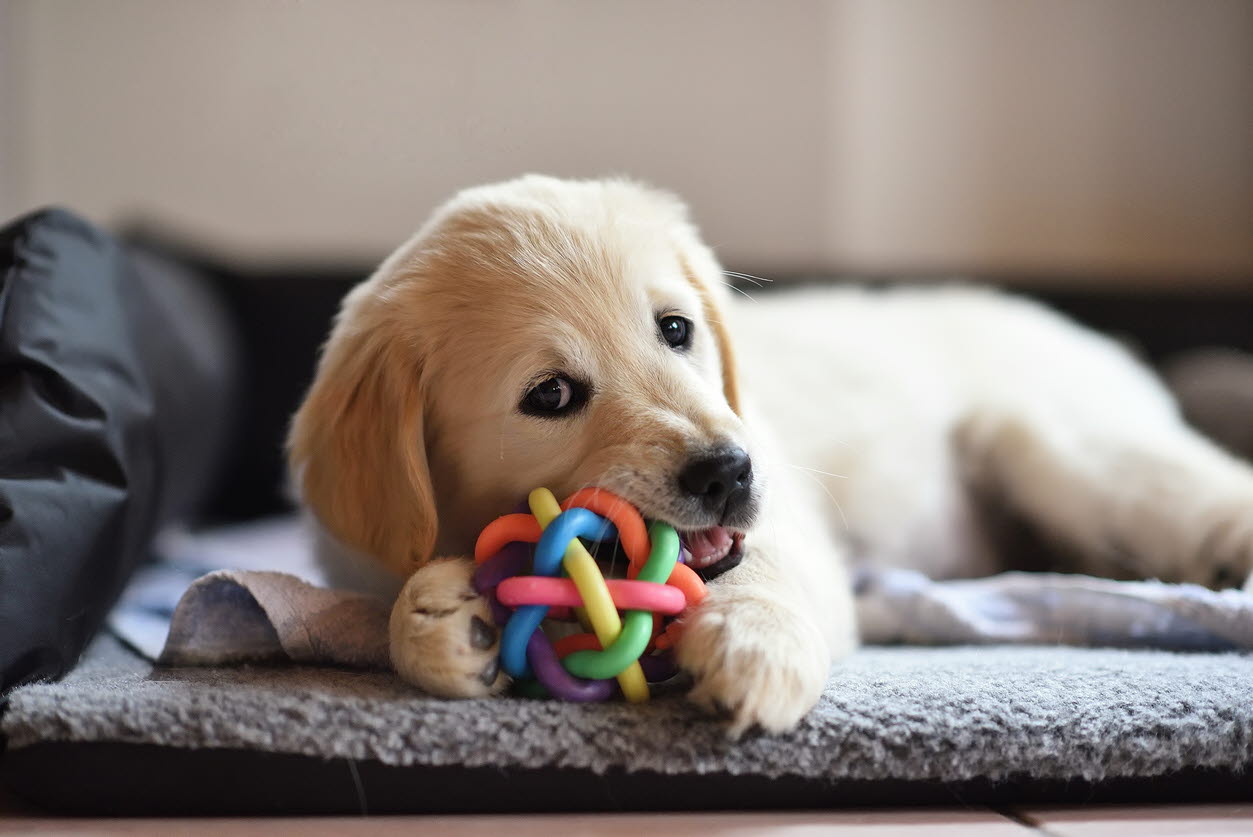
We all love watching puppies and kittens play, and it is perhaps one of the most enjoyable experiences of owning a pet. Play is a universal sign that an animal is happy and content, but have you ever wondered why our pets love to play and how you can encourage more of it?
Why pets like to play
Play is an excellent way to stimulate the body and mind. It gives our pets purpose and a role to play when interacting with us and with other pets. It is also training for real-life situations, especially for young animals. For example, kittens will learn to hunt by playing with a toy mouse and dogs will learn to retrieve by fetching a ball.
The benefits of play
Play is an excellent way to prevent boredom and stimulate your pet’s mind. It can be a good way to move the body and can help prevent obesity. Playing with your pet will also help strengthen the bond they have with you as their owner. Play can help reduce the likelihood of behavioural problems such as barking or digging due to boredom.
How you can encourage your pet to play
Try playing with your pet’s toys yourself. Toss balls around and encourage your pet to join in. Reward them with food treats when they get involved so they look for a reward next time and associate it with happy memories.
Cats love moving objects (laser pointers are great) as well as toys such as feathers on the end of a stick. Be careful that your cat does not ingest any of these toys. String and wool can be particularly dangerous and lead to a life-threatening gastrointestinal obstruction.
Many dogs love treasure hunts, particularly if they are driven by food. Hide your dog’s treats around the house and watch them go on a hunt to find the rewards! You should also consider toys that you can hide food treats or kibble in such as a Kong as these provide longer periods of entertainment and stimulation.
Rotate toys so your pet does not get bored and always throw out any broken or damaged toys. It is not uncommon for dogs to ingest squeakers or the filling from toys and end up with a gastrointestinal obstruction so take care and supervise your pet while they are playing. Investing in good quality toys is recommended.
Types of dog play
Some dog to dog play can be quite rough and owners can misinterpret it for aggression.
Dog to dog play that is considered normal may include body slamming, mouthing, and provoking the other dog. Many of these behaviours will be repetitive but they help dogs learn important life skills and help them become appropriately socialised. That said, if you are worried you should separate the dogs.
The earlier a dog is socialised with other dogs (ideally before the age of 16 weeks) the more likely they are to learn safe dog to dog play and learn when to back off if things are getting too rough.
Types of cat play
Cat to cat play can also become a bit aggressive and playful cat biting can sometimes move on to a real catfight. You should watch the cat’s energy levels - if one cat is more energetic than the other and the interaction becomes one-sided, you may need to step in with a toy to distract or shift the play focus. If you are playing with your cat and their play becomes a bit rough, you need to be careful not to reinforce the behaviour with a toy.
If a cat is really aggressive to you or another cat, putting the cat in a quiet area until they calm down may help deflect the energy. Be careful not to be hurt when moving the cat, however! Your cat will not learn to be calm in time out, but they will reduce their energy levels.
Speak to your veterinarian if you have any questions about your pet’s play behaviour.
